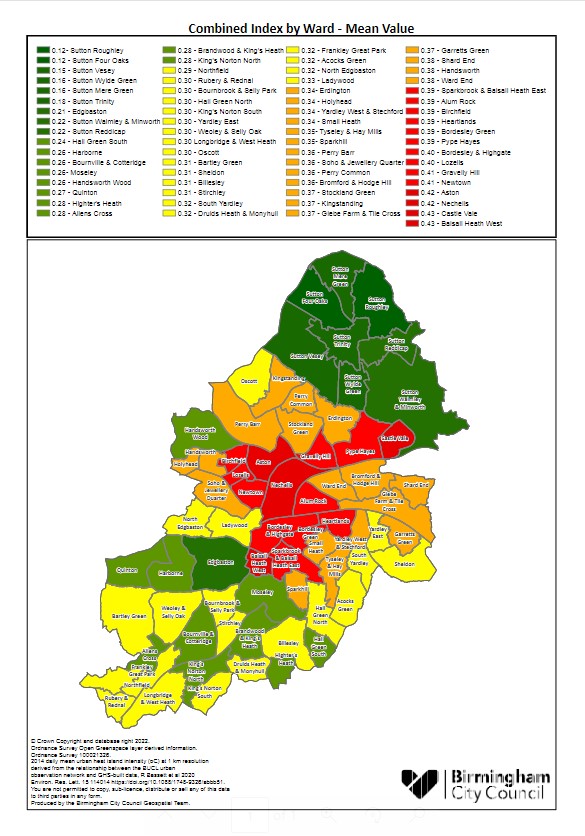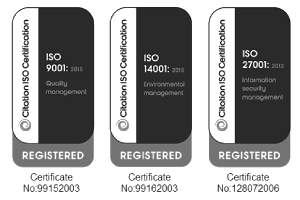Creating Environmental Justice in Birmingham
Humera Sultan, Consultant in Public Health at Birmingham City Council and Pre Doctoral Local Authority Fellow, gives an insight into how local authorities can improve access to parks for local communities.
In 2019, Birmingham City Council (BCC) successfully bid for a Heritage Lottery Funded grant with support from the National Trust to become a Future Parks Accelerator site (FPA). This allowed us to explore ways to embed nature and the value of parks into the wider council.
BCC is the largest local authority in Europe, serving a population of just over 1.1 million residents, living within 69 wards. The city has 631 green spaces, of which 427 are parks; the remaining green spaces include school playing fields, allotment sites, cemeteries and burial grounds.
Connecting with nature through access to green space is critical not only for the health and wellbeing of people but to tackle the climate crisis. This is an issue of Environmental Justice – it is not fair that some communities don’t have access to good quality space within 1km of where they live. We wanted to understand this issue more robustly in Birmingham so we could take action in priority areas, and hence, our metric for Environmental Justice was born.
So, what is Environmental Justice?
This is a term that comes from a social movement which seeks ‘the fair treatment and meaningful involvement of all people regardless of race, ethnicity, income, national origin, or educational level concerning the development, implementation, and enforcement of environmental laws, regulations, and policies’.
Cities such as Berlin (Germany) and Richmond (Virginia, USA) have used Environmental Justice approaches to map both environmental risks and inequalities.
Birmingham is the first UK city to develop its own metric, our Environmental Justice Index (EJI) and below, we describe how we designed it.
Development of the new Environmental Justice Index
Working with our Geographical Data Systems team, we used the following five data sets as inputs:
- Access to Greenspace
- Urban Heat Island (UHI)
- Flood Risk
- Excess Years Life Lost (YLL)
- Index of Multiple Deprivation (IMD)
We combined these data sets to create an overall index on a scale from zero to one for each of the 69 wards in the city. A score closer to one indicates the residents in that ward are most impacted by all 5 factors and experience little environmental justice. If you wish to explore the detailed methodology, you can read our paper here or watch a webinar on how we produced it here.
The Environmental Justice Map for Birmingham
We took these scores for each ward and plotted them on the map below. Red wards are those in need of the most intervention to improve access to green spaces, and green wards are in the least need. The map clearly shows that red wards are clustered within the inner city, which coincides with our wider knowledge that residents in living these areas are in greater need of support across a whole range of other indicators.

What we did next
For the first time, we had a clear narrative about how inequitable our spread of green spaces was in the city. This formed the basis of our City of Nature 25-Year Plan, which was ratified by our Cabinet in 2022. It gave us some key areas to start our interventions, given the scale of Birmingham. We chose 6 wards to start – Bordesley and Highgate, Castle Vale, Nechells, Sparkbrook and Balsall Heath East and Gravelly Hill. All are red wards and importantly, all are geographically connected so we can consider how we develop green corridors. We developed an audit tool, which we call the Fair Park Standard (FPS), which allows parks staff and volunteers to rate the quality of parks according to some simple indicators.
Impact of Environmental Justice Index
The City of Nature team have assessed all the parks located within six wards identified as ‘red’ against the FPS and developed associated action plans. The funding to support these action plans was agreed by Cabinet, and is coming from the Community Infrastructure Levy, which is a first for BCC. Senior Managers also realised that EJ impacted many services and outcomes beyond parks, offering further potential for collaborative working and joint policy.
Given the evidence-based nature of this approach, the City of Nature team has been given the mandate to engage with agencies beyond the LA, to support LA plans to restore Environmental Justice in Birmingham. This has created the ‘City of Nature Alliance’ (CoNA), made up of a range of Birmingham-based green and community organisations and third-sector organisations, who are now collaborating in a far more strategic way.
The first ward to benefit from the EJI was Bordesley and Highgate Ward, with an EJI score of 0.40. To achieve the delivery of the City of Nature actions at a site level, we audited each of the five parks in the ward against the FPS. We created a plan for action to raise the standard of each park to the minimum required within 12 months. Five organisations from the CoNA were successful at gaining small grant funding to conduct actions from the plan. Rather than focusing their resources on distinct parts of Birmingham, they worked collaboratively to make Bordesley and Highgate a greener place to live.
Examples of the type of action were to engage communities around each site using onsite notice boards to display posters, face-to-face surveys, and social media. We delivered improvements to amenity infrastructure along with habitat creation to increase biodiversity. We worked with the CoNA to deliver healthy activities at each site including sports for young people and sensory walks. Local schools were involved through nature-based activities delivered in schools. At 12-month follow-up, we reaudited all the sites and found the minimum standard had been achieved.
Taking this work further
We continue to make improvements in the parks in the other red wards identified with progress being made in Balsall Heath, Castle Vale and Nechells. We recognise the challenges that all Local Authorities face in adequately investing in parks and this is part of the next phase of our work to continue our journey of achieving Environmental Justice for Birmingham.
Acknowledgements
Nick Grayson1, Stephen Jones1, David Pike1, Sarah Greenham2, Debbie Needle3, Jon Sadler2, Emma Frew4.
[1] Birmingham City Council; [2] Department of Geography and Earth Sciences, University of Birmingham, UK;
[3] Birmingham Open Spaces Forum, Birmingham, UK;
[4] Centre for Economics of Obesity, Institute for Applied Health Research, University of Birmingham, UK


.png)



.png)